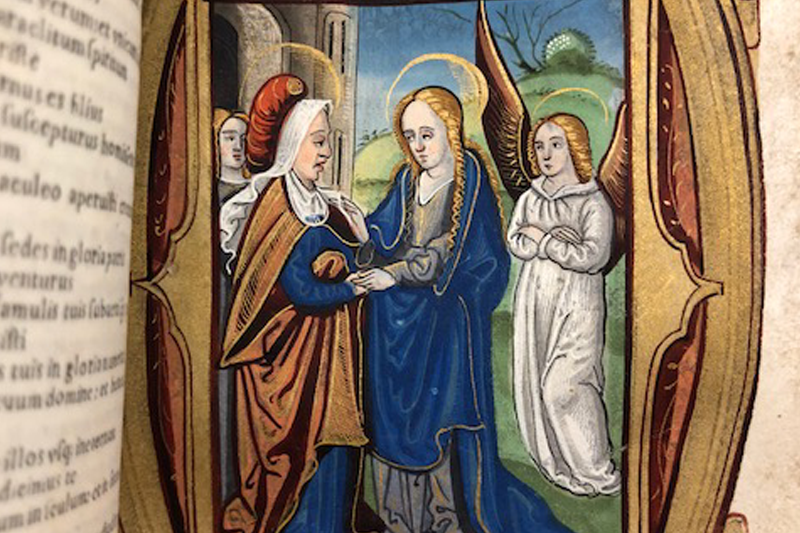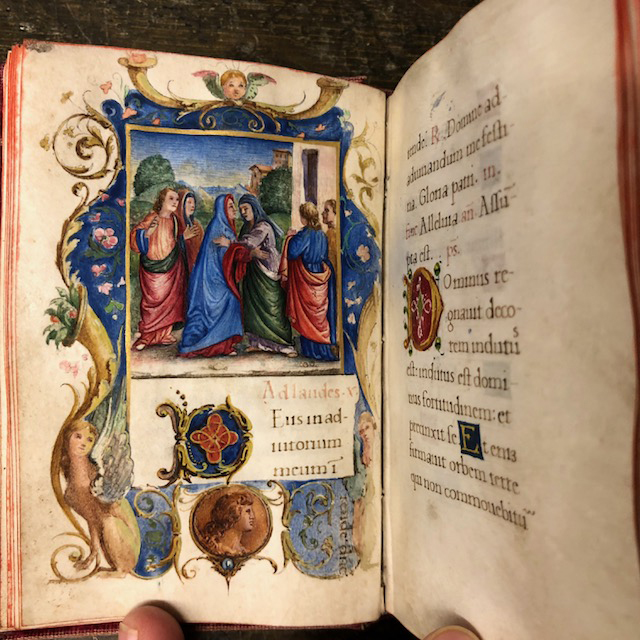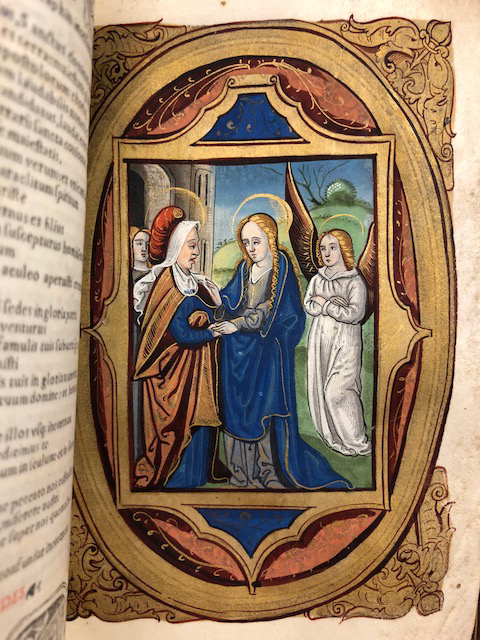Blogs

The Medieval Best-seller: Part 1
By Jillian Ewalt, Librarian
In a recent New York Times article, Tina Jordan explored books and authors that appeared on the best-seller list 25, 50 and 75 years ago. In 1993, there were plenty of familiar names (at least to me) like John Grisham, Stephen King and Anne Rice. Go back in time a little further to 1968, and Charles Portis’ True Grit was topping the charts (Coen brothers’ remake, anyone?). In 1943, Ayn Rand came in at No. 9 with The Fountainhead.
But have you ever wondered what the best-seller list might have looked like 500 years ago? I’ll give you a hint. There was only one thing on it, but that one thing was the book everyone had to own. Catherine of Cleves had one. Henry the VIII had one. If you were a middle- to upper-class, moderately literate European, you probably had one too. And all the better if yours was fancier than your neighbor’s. If you owned only one book, it was most likely this. There were more of these commissioned, collected, bought, sold, and stolen than any other book including the Bible. Any guesses? It was a Book of Hours and it was the best-seller from 1250 to 1550. Now that’s a long time — approximately 15,600 straight weeks — at the top of the charts, if you ask me.
Books of Hours were more than just a prayer book. They were used to tell time, to keep track of major and local religious feasts and to teach children. They even referenced what activities one should be doing in any given season, such as feeding acorns to boars in November or falconing in May. Wondering which days were bad luck (also known as “Egyptian Days”)? Consult a Book of Hours. Wondering how many Gospel lessons to do? Consult a Book of Hours. Above all, owning a Book of Hours allowed the literate — and to an extent, the passively literate — laity to imitate the ordained. Preceded by larger, communal books like breviaries and missals, Books of Hours (or Horae) allowed medieval people to engage in a new private devotional tradition.
Admittedly, one of my favorite things about Books of Hours is that they have a lot of pictures — or rather tiny, elaborate paintings called miniatures. The work of the best artists of the time often ended up on the pages of Books of Hours. These intricate (sometimes even gold-encrusted) images depicted the infancy cycle, the Passion cycle, Old Testament scenes, or portraits of saints, depending on the part of the book being illustrated. The images functioned as themes for meditation, but also in a practical capacity to help the owner find a particular section of the book. The more one had to spend on a commission, the more elaborate the illustrations could be. Some even featured portraits of the commissioner, sort of like a medieval selfie. Because of these elaborate illustrations, Books of Hours were status symbols. As opposed to a modern paperback best-seller, they were works of art in their own right.
So, why Books of Hours in the Marian Library? A central part of the text in Books of Hours is the Little Office of the Blessed Virgin Mary, or, the Hours of the Virgin for short. Many Books of Hours also include the Marian prayers Obsecro te and O intimerata. Other sections like suffrages to saints, Hours of the Cross, Hours of the Holy Spirit, and other accessory prayers could be added at the whim (and pocketbook) of the commissioner. So even though each Book of Hours was unique, they all had at least one thing in common: Mary.
The Marian Library’s collection includes four Books of Hours from the late middle ages. Stay tuned to learn more about each of these books in future posts! In the meantime, if you have a question about Books of Hours in the Marian Library’s collection, please contact me at jewalt1@udayton.edu.
This post is the first in a 3-part series. Check out Part II and Part III for more information.
References and Further Reading
Wieck, Roger. Time Sanctified: The Book of Hours in Medieval Art and Life. New York: George Braziller, 1988 (second edition 2001).
Roten, Johann. Books of Hours and Our Lady https://udayton.edu/imri/mary/b/book-of-hours-and-mary.php
Jordan, Tina. What Did the Fiction Best-Seller List Look Like 25, 50, 75 Years Ago?
https://www.nytimes.com/2018/11/02/books/review/fiction-best-seller-history.html


